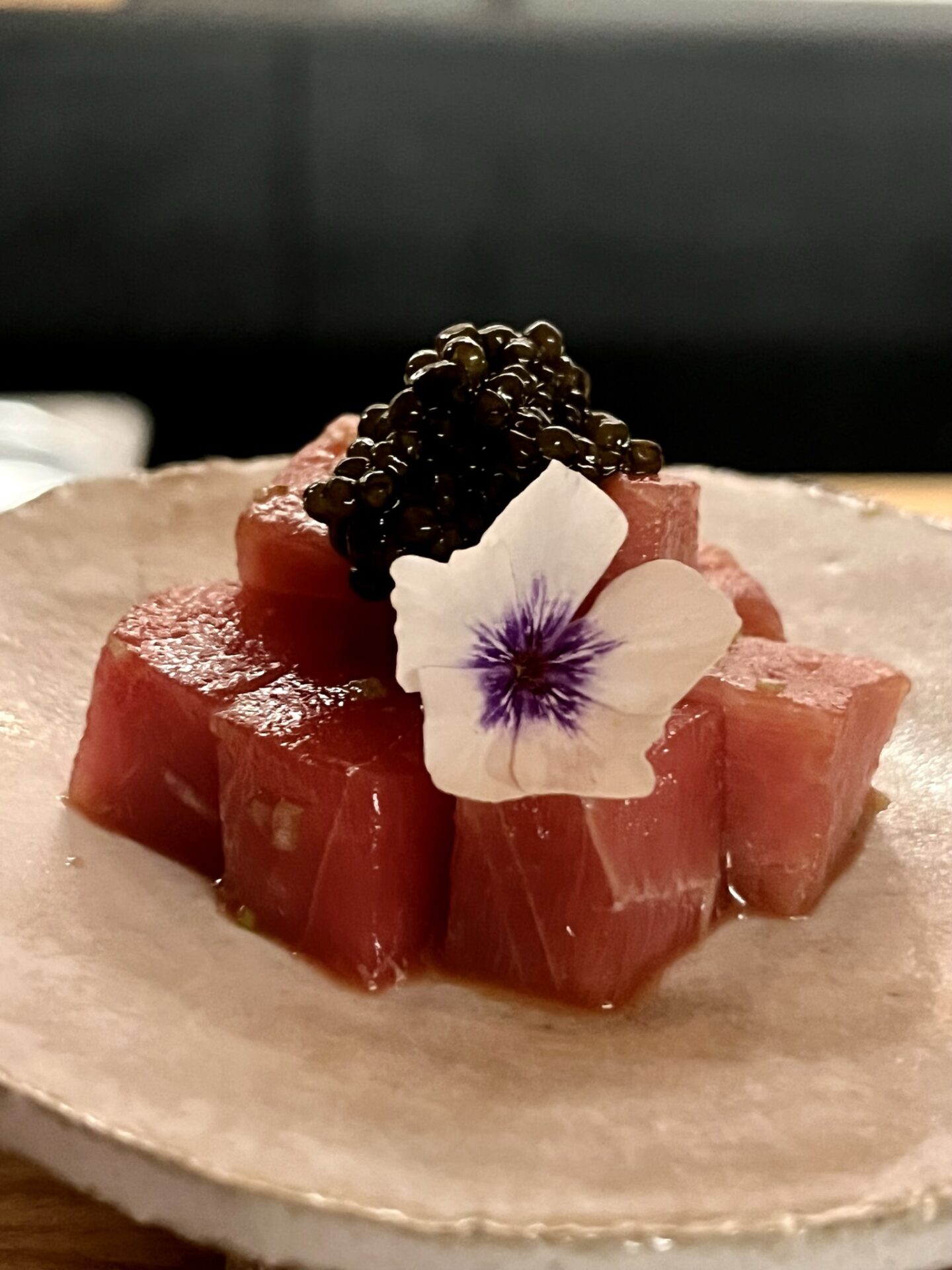

Omadi
Pohjoinen Rautatiekatu 23E (in the hotel Helka)
00100 Helsinki
I visited Omadi with Japanese friends. As soon as we entered the restaurant, we were told that it’s only us, four people, who were going to dine that evening. This restaurant has only a counter table and I heard that omakase menu was served to all the customers at the same time. “Omakase” (おまかせ)is a Japanese word that means that leaving the choice to the chef when we are talking about restaurants. I had heard great reviews on the restaurant and been looking forward to dining there.
What I thought about the dining experience
Overall, it was a lovely experience with a lot of interaction with the chefs. As one of the chefs was Japanese, we could talk deeper about Japanese cuisine and ingredients.
I had heard from one of my friends who had dined there before that a chef studied chemistry and chose the way of combining ingredients to bring chemical reactions to create the best taste with ingredients, for example, marinating. The dished tasted nice but I wonder if it could have been much less tasty if the raw fishes were served without such method. Would tuna be less tasty if it was served only with soy sauce and wasabi? I wish I had an opportunity to compare the tastes between simply prepared dishes and the dishes created utilizing chemical reactions. Am I asking too much? Maybe…
Sushi served at this restaurant was done with edomae method. Sushi’s history goes back to Nara-era, about 1300 years ago and to preserve the fish from Tokyo Bay, salt, vinegar, and boiling method were used. Tokyo was called “Edo” at that time. At Omadi, I was not sure about the sushi rice they used for the edomae sushi. The explanation was they chose the best rice available which works the best for edomae sushi, but it was not my kind of rice. A friend, Tokyo native, said that she liked the rice and edomae was perfect. So, it’s pretty much about preference.
They do not accommodate dietary restrictions as they cleared says in their website. It might be difficult to serve wider customers while people have many different dietary requirements nowadays and it was accommodated at almost all other restaurants. But if you like fish and Japanese food, or sake, it’s worth visiting Omadi and see if you like their style of food preparation. As to myself, I would go there again if I had an opportunity to do so.
Below, have a look at the dishes that we had.

One of us loves sake and she wanted to know all the sakes they have and try something which she ca not usually find in Finland. Unfortunately, they did not have sake list and had to show us many sake bottles. We hoped they will make a list soon. In cases, variety of sake was extensive.

The course started sashimi, bass, arctic char, and yellowtail. The way they prepared sashimi was not ordinary. Sashimi is usually eaten with soy sauce and a bit of wasabi. But here, all sashimi was either marinated or seasoned and soy sauce was not served.

Tartar of medium fatty tuna(中トロ) with caviar was one of my most favorites in the course. Both medium fatty tuna and caviar are my favorite foods, and the combination was impressive! Texture of tuna was perfect.

Tempura(fritter)of fermented matsutake mushroom. Matsutake is the most appreciated, thus the most expensive mushrooms in Japan. An occasion to be able to taste matsutake is regarded special. In Finland, you could pick up matsutake for free in the forests. Texture of flitter was light and crispy which I liked.

Grilled tuna cheek meat, soy mirin cured egg yolk and ginger juice. I love all dishes served with eggs. This was not exception.

Chawanmushi, Japanese steamed brothy custard). Borth was made from mushrooms, bonito flakes and kelp.

Grilled king fish belly, rice, and nori.


Sushi: Scallop. I forgot to take a picture of sushi but scallop shell. I did not even remember what kind of scallop dish I had but friends reminded me by sending pictures. I was too excited about a big, beautiful scallop shell.

Sushi: Pulled crab meat, miso (internal organs), fat of crab with fresh wasabi from England. I had to ask which part of carb has fat they used. We were familiar with miso and meat of crab but did not know about fat.

Sushi: Yellow tail with Yuanji sauce. Yuanji is made of soy sauce, mirin, sake and citrus fruit.

Sushi: Red (lean) tuna marinated in soy sauce.

Sushi: Fatty tuna (the fattest part). I loved it. I prefer fatty part of tuna than lean part. And I was happy for the opportunity to eat the fattest part of tuna in Finland.

Sushi: Neck of tuna and pickled radish. I do not like Japanese pickles very much but this one was ok.

Miso-soup in a nice bowl.

Koji rice ice cream with dried umeboshi(pickled plum) and shiso (Japanese basil). Unfortunately, the flavors were not my thing. I do not like umeboshi… But I am sure it tastes very nice if you do not dislike umeboshi. All three of my Japanese friends liked it.
